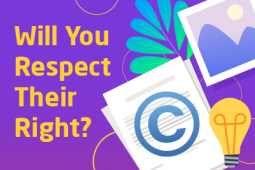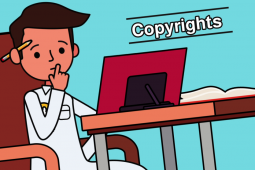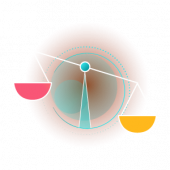Am I knowledgeable enough about copyrights?
A Short Introduction to Intellectual Property

Remember last time you were talking to a friend and then you said "Heyyy… now these are my words you’re using." Probably you laughed then and moved on, but in business life, this doesn’t always go unpunished, because of what law calls "Intellectual Property".
Intellectual Property (IP) represents all creations of the mind or intellect which you can legally own. For example, you came up with a great idea for a TV show. You pitched it to a producer, but he turned you down. Six months later, you open the TV and unexpectedly watch that same idea being executed in the season’s highest-viewed programs. How angry would you feel then?
But had you registered your idea under IP, you would have been able to legally sue that producer. Law would have either stopped him from running his show and thus earned you back your recognition, or would have imposed fines on him and thus earned you back the financial benefit of your idea – most probably higher than you would have sold it in the first place.
So, don’t lose your great gift of innovation for careless acts of infringement. The IP law has got your back. Go on. Compose that great song. Direct that great film. Design that beautiful chair. Innovate that life-saving medical product, and let us all live in a better place.
Below are the four most common types of IP which also represent different ways to protect your rights better from now on.
- Copyright: It obviously means “the right to copy.” When you have a copyrighted work, it means you’re the only legally qualified entity to reproduce or publish this work in any possible form. Works protected by copyrights include literary, dramatic, musical and artistic works, such as songs, books, choreography, plays, movies and advertisements.
- A patent: It is an exclusive right granted for inventions in any field of technology, be it for kitchens or outer space. A famous example is the harness created by the Founder of GoPro to attach a camera safely to the body of an adventurer. Patents can also include a new package design, a medical device, a technological invention and any other product or process that offers a new way of doing something.
- A trademark: It can be any verbal or visual symbol that differentiates a brand from its competitors and stands for its image and standards. For example, when you read “I’m lovin’ it,” a lot more than this slogan comes to your mind. Similarly for when you see Nike’s check sign, Cadbury’s pantone 2685C purple and CNN’s acronym. A trademark can grow in value as a brand grows bigger in the market, such as Apple whose trademark value has now reached around $29.5 billion.
- A trade secret: Imagine that KFC or Krispy Kreme published their recipes online? How drastically would their sales drop? A trade secret is any process or formula a company keeps confidential to gain business advantage over its competitors. Unlike the IP types above, you can’t register for a trade secret. However, it’s your responsibility to keep your information private such as making your employees sign a Non-Disclosure Agreement (NDA).
Despite the importance of IPs in protecting your rights, they eventually reach their expiry date. For example, the U.S law protects a copyrighted work until the last day in the author’s life plus another 70 years or 50 years as per Canada. A patent is usually granted for 20 years, while a trademark expires after 10 years unless actively renewed. Following the expiry date, all IPs enter into public domain, which means they become available for everyone’s use, free of any legal liability, such as The Prophet (by Khalil Gibran), Peter Pan, The Wonderful Wizard of Oz, The Hunchback of Notre Dame and many other famous works.
For more details, reach WIPO* (World Intellectual Property Organization)
@2x.png)


















